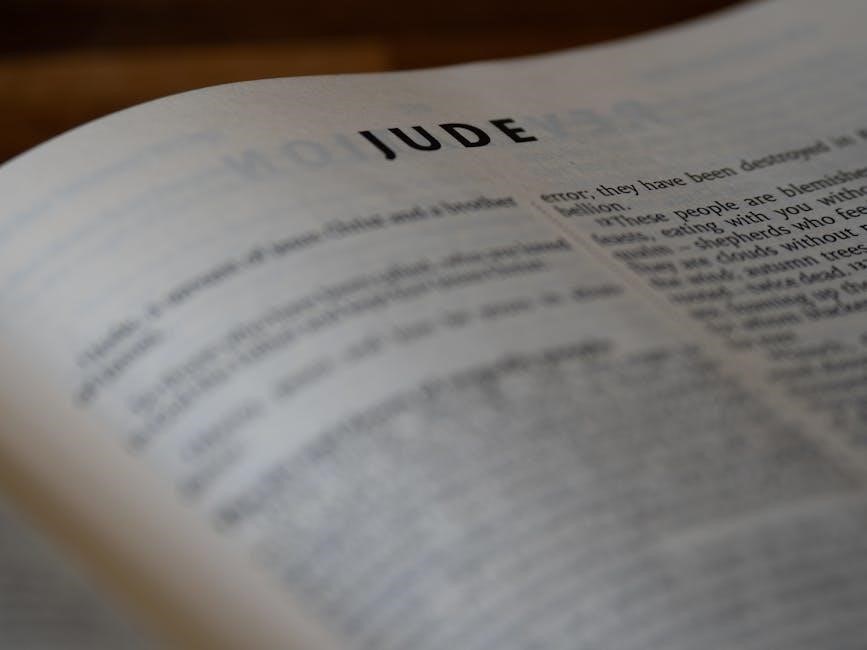i am malala pdf book

I Am Malala PDF Book chronicles Malala Yousafzai’s courageous journey, her survival of a Taliban assassination attempt, and her unwavering advocacy for girls’ education globally.
1.1 Overview of the Book
I Am Malala is a powerful memoir co-authored by Malala Yousafzai and Christina Lamb. The book recounts Malala’s journey from her early life in Swat Valley to her global advocacy for girls’ education. It vividly portrays her survival of a Taliban assassination attempt, her recovery, and her rise as a symbol of courage. The narrative blends personal anecdotes with broader themes of education, extremism, and cultural identity, offering an inspiring glimpse into Malala’s resilience and her mission to create a better future for all children.
1.2 Significance of the Memoir
I Am Malala holds profound significance as a testament to the power of resilience and the fight for girls’ education. Malala’s story transcends her personal experience, becoming a global symbol of courage and advocacy. The memoir highlights the oppressive regime of the Taliban and the broader struggle for education and equality. Its impact lies in inspiring millions to challenge injustice and pursue change, making it a pivotal work in modern literature and activism, resonating with readers worldwide and fueling movements for education and human rights.
1.3 Author Background: Malala Yousafzai
Malala Yousafzai is a Pakistani activist for girls’ education and the youngest Nobel Prize laureate. Born in Swat Valley, she grew up in a family advocating for education. Her father, Ziauddin, ran a school and inspired her to speak out against the Taliban’s ban on girls’ education. Malala’s activism began at age 11, writing for BBC Urdu under a pseudonym. Her global influence grew after surviving a 2012 assassination attempt, solidifying her role as a symbol of courage and a voice for education rights worldwide, continuing her advocacy through the Malala Fund.

Background of Malala Yousafzai
Malala Yousafzai, born in Swat Valley, Pakistan, grew up in a family advocating for education. Her father, an educator, inspired her to challenge the Taliban’s oppression, becoming a global advocate for girls’ education after surviving an assassination attempt. Her resilience and activism have made her a symbol of courage and a powerful voice for education rights worldwide.
2;1 Early Life in Swat Valley
Malala Yousafzai was born in the picturesque Swat Valley of Pakistan, known for its natural beauty. Her early life was marked by a loving family and a strong emphasis on education, with her father, Ziauddin, running a local school. The peaceful surroundings contrasted with the rising influence of the Taliban, which gradually imposed harsh restrictions, setting the stage for Malala’s future activism. Her childhood experiences deeply shaped her determination to fight for girls’ education and stand against oppression.
2.2 Family and Education
Malala’s family played a pivotal role in her early life, with her father, Ziauddin Yousafzai, being a vocal advocate for education. He ran a local school, instilling in Malala a deep love for learning. Her mother, Tor Pekai, though uneducated herself, supported Malala’s ambitions. The family’s commitment to education shaped Malala’s worldview, driving her to excel academically and speak out against the Taliban’s efforts to deny girls’ education. This foundation fueled her determination to challenge injustice and advocate for educational rights, even in the face of adversity.
2.3 The Influence of Her Father, Ziauddin Yousafzai
Ziauddin Yousafzai, Malala’s father, was a dedicated educator and advocate for girls’ education, inspiring Malala’s passion for learning. As a teacher and poet, he nurtured her curiosity and encouraged her to speak out against injustice. His beliefs in equality and education deeply shaped Malala’s mindset, empowering her to challenge the Taliban’s oppression. Ziauddin’s unwavering support and progressive values instilled in Malala the courage to become a symbol of resistance and a global advocate for educational rights.

The Taliban and Their Impact on Swat Valley
The Taliban’s oppressive rule in Swat Valley led to severe restrictions, banning girls’ education and enforcing strict Islamic law, creating a climate of fear and suppression.
3.1 Rise of the Taliban in Pakistan
The Taliban emerged in Pakistan during the 1990s, gaining strength in regions like Swat Valley. Their rise was fueled by political instability, religious extremism, and a vacuum in governance. By the late 1990s, they began enforcing strict Islamic law, opposing Western influences, and restricting women’s rights. Their ideology spread rapidly, particularly in areas with limited access to education and economic opportunities, laying the groundwork for their oppressive rule and resistance to modernization.
3.2 Oppression and Ban on Girls’ Education
The Taliban enforced a strict ban on girls’ education in Swat Valley, deeming it un-Islamic. Schools were destroyed, and girls were barred from attending classes. This oppressive regime sought to suppress women’s empowerment and perpetuate ignorance. Malala’s activism emerged as a direct response to this brutality, challenging the Taliban’s decrees and advocating for girls’ right to learn. Her defiance highlighted the broader struggle for gender equality and education under extremist rule, inspiring global solidarity and resistance against such oppressive practices.
3.3 Malala’s Early Activism
Malala began her activism at a young age, speaking out against the Taliban’s efforts to deny girls’ education. Using the pseudonym Gul Makai, she wrote for the BBC about life under Taliban rule, highlighting the oppression faced by girls. Her father, Ziauddin, encouraged her to advocate for education, and she quickly gained attention for her courage. Malala’s early activism laid the foundation for her global influence, as she risked her life to challenge injustice and inspire change, even before the infamous assassination attempt that brought her story to the world’s attention.

The Assassination Attempt
In 2012, the Taliban attempted to assassinate Malala Yousafzai, shooting her on her school bus. At 15, she survived critical injuries, sparking global outrage and solidarity for her cause.
4.1 The Day of the Shooting
On October 9, 2012, Malala Yousafzai was shot by the Taliban while returning home from school in Swat Valley. A gunman boarded her school bus, asked for her by name, and fired a bullet at her head. The attack, intended to silence her advocacy for girls’ education, instead became a global rallying cry. Malala’s survival and resilience defied the Taliban’s brutality, transforming her into an international symbol of courage and determination. The shooting marked a turning point in her life and her mission to fight for education and equality.
4.2 Injuries and Immediate Aftermath
Malala suffered severe injuries, including a fractured skull and damaged brain tissue, after the bullet grazed her head. She was airlifted to a military hospital in Peshawar, where doctors stabilized her condition. Her fighting spirit and resilience inspired global prayers and support. The attack sparked widespread outrage, uniting people across borders in solidarity with Malala. Her survival against overwhelming odds became a testament to her strength, fueling her mission to advocate for girls’ education and peaceful resistance against oppression.
4.3 Global Reaction to the Attack
The assassination attempt on Malala sparked global outrage and solidarity, uniting people worldwide in condemnation of the Taliban’s brutality. International leaders and citizens alike rallied in support, demanding justice and advocating for girls’ education. The attack brought unprecedented attention to Malala’s cause, transforming her into a global symbol of courage and resilience. The outpouring of support underscored the power of her message, inspiring widespread calls for change and cementing her role as a beacon of hope for millions across the globe.

Malala’s Recovery and Global Advocacy
Malala’s remarkable recovery transformed her into a global icon, amplifying her advocacy for girls’ education and peaceful resistance, inspiring millions worldwide with her courage and resilience.
5.1 Medical Treatment and Recovery
After the assassination attempt, Malala underwent critical surgery in Pakistan before being airlifted to Birmingham for advanced care. Her recovery was remarkable, with skilled medical teams reconstructing her skull and treating her severe injuries. The global outpouring of support buoyed her spirit during rehabilitation. Malala’s resilience and determination inspired millions as she regained strength and continued her advocacy for girls’ education, becoming a beacon of hope and courage worldwide.
5.2 Becoming a Global Symbol of Courage
Malala’s survival and unwavering resolve transformed her into a global icon of bravery and resilience. Her story resonated worldwide, inspiring millions to stand for girls’ education and human rights. Awarded the Nobel Peace Prize in 2014, she became the youngest laureate, further amplifying her message. Through her advocacy, Malala emerged as a powerful symbol of hope, proving that one voice can inspire global change and challenge oppression, making her an enduring figure in the fight for equality and education for all.
5.3 Formation of the Malala Fund
Following her recovery, Malala co-founded the Malala Fund with her father, Ziauddin Yousafzai, to champion girls’ education globally. The organization supports education activists, provides resources, and advocates for policy changes to ensure girls can attend school safely. By addressing systemic barriers, the Malala Fund empowers communities to fight for educational equality, particularly in regions like Pakistan and Afghanistan. This initiative has amplified Malala’s mission, creating a lasting impact on education access for millions of girls worldwide and fostering a global movement for educational justice and equality.

Key Themes in “I Am Malala”
I Am Malala explores themes of girls’ education, peaceful resistance, and cultural identity, highlighting Malala’s courage and resilience against oppression, inspiring global change and hope.
6.1 Fight for Girls’ Education
Malala Yousafzai’s memoir vividly highlights her relentless advocacy for girls’ education, emphasizing its transformative power. She recounts how the Taliban’s ban on girls attending school ignited her determination to challenge oppressive norms. Through her personal experiences and global activism, Malala underscores the importance of equal educational opportunities, inspiring countless individuals to join her mission. Her story serves as a powerful reminder of education’s role in empowering girls and fostering societal progress worldwide.
6.2 Peaceful Resistance Against Extremism
Malala’s memoir showcases her belief in peaceful resistance as a powerful tool against extremism. Despite the Taliban’s oppressive regime, she advocated for change through education and her voice, refusing to resort to violence. Her survival and continued activism underscore the strength of non-violent protest, inspiring global movements. The book highlights how Malala’s courage challenged the Taliban’s ideology, proving that even in the face of extremism, peaceful resistance can spark transformative change and unite people worldwide in the pursuit of justice and equality.
6.3 Cultural and Religious Contexts
Memoirs of Malala Yousafzai delve into the rich cultural and religious tapestry of her Pashtun heritage and Islamic faith. Her journey highlights how these influences shaped her identity and values, fostering resilience and a deep commitment to justice. The book explores the intersection of tradition and progress, particularly in advocating for girls’ education. Malala’s story challenges misinterpretations of religious teachings used to justify oppression, emphasizing instead the Islamic values of knowledge and equality. This cultural and religious context underscores her message of hope and unity.

Structure of the Book
The book is structured into four parts, detailing Malala’s early life, her experiences under Taliban rule, the assassination attempt, and her recovery and advocacy efforts.
7.1 Part One: Early Life and Family
Part One of “I Am Malala” introduces her early life in Swat Valley, her close-knit family, and her father’s passion for education, shaping her future as an advocate for girls’ rights.
7.2 Part Two: Life Under Taliban Rule
Part Two details the Taliban’s oppressive regime in Swat Valley, their ban on girls’ education, and Malala’s growing defiance. It highlights her father’s courageous stance and the family’s resilience amid escalating violence and fear, showcasing Malala’s early activism and determination to challenge the Taliban’s restrictions on women’s rights and education.
7.3 Part Three: The Shooting and Its Aftermath
Part Three recounts the harrowing day of the assassination attempt, the immediate medical response, and Malala’s fragile recovery. It captures the global outrage and support that followed, detailing her airlift to Birmingham for critical care and the emotional toll on her family. This section vividly portrays the turning point that transformed Malala into an international symbol of resilience and courage, amplifying her voice for girls’ education worldwide.
7.4 Part Four: Recovery and New Beginnings
Part Four details Malala’s remarkable recovery in Birmingham, where she received life-saving treatment. Her family relocated to the UK, and Malala resumed her advocacy with renewed vigor. This section highlights her emotional journey, the global support she received, and her determination to continue fighting for girls’ education. It also explores how her experiences shaped her future and amplified her message, transforming her into a global symbol of resilience and hope.

Reception of the Book
I Am Malala received widespread critical acclaim, became a bestseller, and significantly influenced global education movements, solidifying Malala’s role as a symbol of courage and change.
8.1 Critical Acclaim and Reviews
I Am Malala received widespread critical acclaim for its emotional depth and inspiring narrative. Reviewers praised Malala’s courage and determination, highlighting her ability to convey the struggles of living under Taliban rule. The memoir was lauded for its authenticity and powerful storytelling, resonating with readers worldwide. It became an international bestseller, with many hailing it as a significant contribution to the global conversation on girls’ education and human rights.
8.2 Commercial Success and Bestseller Status
I Am Malala achieved remarkable commercial success, becoming an international bestseller shortly after its release in 2013. The book’s inspiring narrative and global relevance contributed to its widespread popularity. The PDF version, readily available on platforms like OnPdf, further enhanced its accessibility, making it a favorite among readers worldwide. Its success underscores the power of Malala’s story to resonate across cultures and inspire change, cementing its place as a modern literary phenomenon.
8.3 Impact on Global Education Movements
I Am Malala has profoundly influenced global education movements, inspiring campaigns for girls’ education worldwide. The book’s message of resilience and advocacy has motivated individuals and organizations to support educational access, particularly in regions where girls face barriers. The PDF version has amplified its reach, enabling widespread dissemination of Malala’s vision. This has led to increased awareness and action, fostering a global community committed to ensuring education for all, as highlighted by the formation of the Malala Fund and its initiatives.

The “I Am Malala” PDF Version
The I Am Malala PDF offers a convenient and accessible way to read Malala’s inspiring story. Its digital format ensures wider reach and easy readability for global audiences.
9.1 Availability and Accessibility
The I Am Malala PDF is widely available online, offering easy access to readers worldwide. Platforms like OnPdf provide free downloads in formats such as PDF, Word Doc, and Text File. This digital accessibility ensures that Malala’s story reaches a global audience, transcending geographical barriers. The PDF version is particularly popular due to its clear formatting and readability, making it a preferred choice for many readers seeking inspiration and education on girls’ rights and resilience against oppression.
9.2 Benefits of the Digital Format
The I Am Malala PDF offers numerous advantages, including effortless access and portability. Readers can easily carry the book on devices like smartphones and tablets, enabling anytime reading. The digital format also enhances readability with clear pagination and formatting. Additionally, features like search functionality and adjustable font sizes improve the reading experience. This accessibility ensures Malala’s inspiring story reaches a broader audience, fostering global engagement with her mission for girls’ education and peaceful resistance.
9.3 Importance of Reputable Sources for Download
Accessing I Am Malala PDF from reputable sources ensures a safe, legal, and high-quality reading experience. Reputable platforms prevent exposure to malicious content, preserving the integrity of Malala’s story. They also guarantee well-formatted, accurate versions of the book, enhancing readability. By choosing trusted sources, readers support ethical publishing practices, contributing to the sustainability of educational content. This approach respects the author’s work and ensures the message of courage and advocacy is shared responsibly and effectively.

Educational and Inspirational Value
I Am Malala PDF Book serves as a powerful educational tool, offering lessons on resilience, equality, and global education challenges. It inspires readers to advocate for change.
10.1 Lessons for Young Readers
I Am Malala PDF Book offers invaluable lessons for young readers, emphasizing courage, resilience, and the importance of education. Malala’s story teaches them to stand up for their rights and never give up in the face of adversity. It highlights the power of one person’s voice to create change and inspires young minds to pursue their goals passionately. The memoir also fosters empathy and understanding of global issues, encouraging readers to advocate for equality and justice in their own communities.
10.2 Insights into Global Education Challenges
I Am Malala PDF Book provides profound insights into global education challenges, particularly the oppression of girls in regions like Swat Valley. Malala’s story reveals how systemic barriers, cultural norms, and extremism deny millions of children access to education. The memoir highlights the Taliban’s brutal efforts to suppress learning and the broader struggle for equality in education worldwide. It underscores the importance of addressing these issues to empower future generations and foster global progress, inspiring readers to advocate for educational equity.
10.3 Motivational Aspects of Malala’s Story
I Am Malala PDF Book is a powerful source of inspiration, showcasing Malala’s unwavering courage and resilience. Her survival and continued advocacy despite extreme adversity motivate readers to stand up for their rights and pursue education tirelessly. Malala’s journey exemplifies the transformative power of one voice, encouraging individuals to challenge injustices and strive for change. Her story ignites hope and determination, proving that even the youngest voices can inspire global movements and create lasting impact.
Legacy of “I Am Malala”
I Am Malala PDF Book has left an enduring legacy, inspiring global education reforms and empowering millions. Malala’s courage and advocacy continue to spark change worldwide, ensuring her story remains a timeless symbol of resilience and hope.
11.1 Long-Term Impact on Education Advocacy
I Am Malala PDF Book has profoundly influenced global education advocacy, inspiring millions to fight for educational equality. Malala’s story ignited movements worldwide, leading to increased enrollment rates and policy reforms. Her resilience and message have empowered communities, especially in regions where education is restricted. The Malala Fund continues her mission, advocating for girls’ education and challenging systemic barriers. Her legacy ensures that the fight for education remains a global priority, inspiring future generations to pursue learning and equality.
11.2 Malala’s Continuing Influence
Malala Yousafzai remains a global icon, influencing education and human rights movements. Her advocacy has led to increased awareness and action, inspiring leaders and individuals worldwide. Through her foundation, she continues to challenge barriers to education, particularly for girls in conflict zones. Malala’s voice has sparked a movement, proving that one person’s courage can lead to transformative change on a global scale. Her influence extends beyond education, advocating for peace and equality, leaving a lasting legacy in modern history.
11.3 The Book’s Role in Modern History
I Am Malala has become a pivotal work in modern history, documenting Malala’s struggle for girls’ education and survival against oppression. Its publication in 2013 brought global attention to the plight of Swat Valley under Taliban rule. The book inspired countless education movements and solidified Malala’s status as a Nobel Peace Prize laureate. As a digital resource, the PDF version has ensured widespread accessibility, making it a cornerstone of contemporary discussions on education, equality, and human rights, leaving an indelible mark on global consciousness.